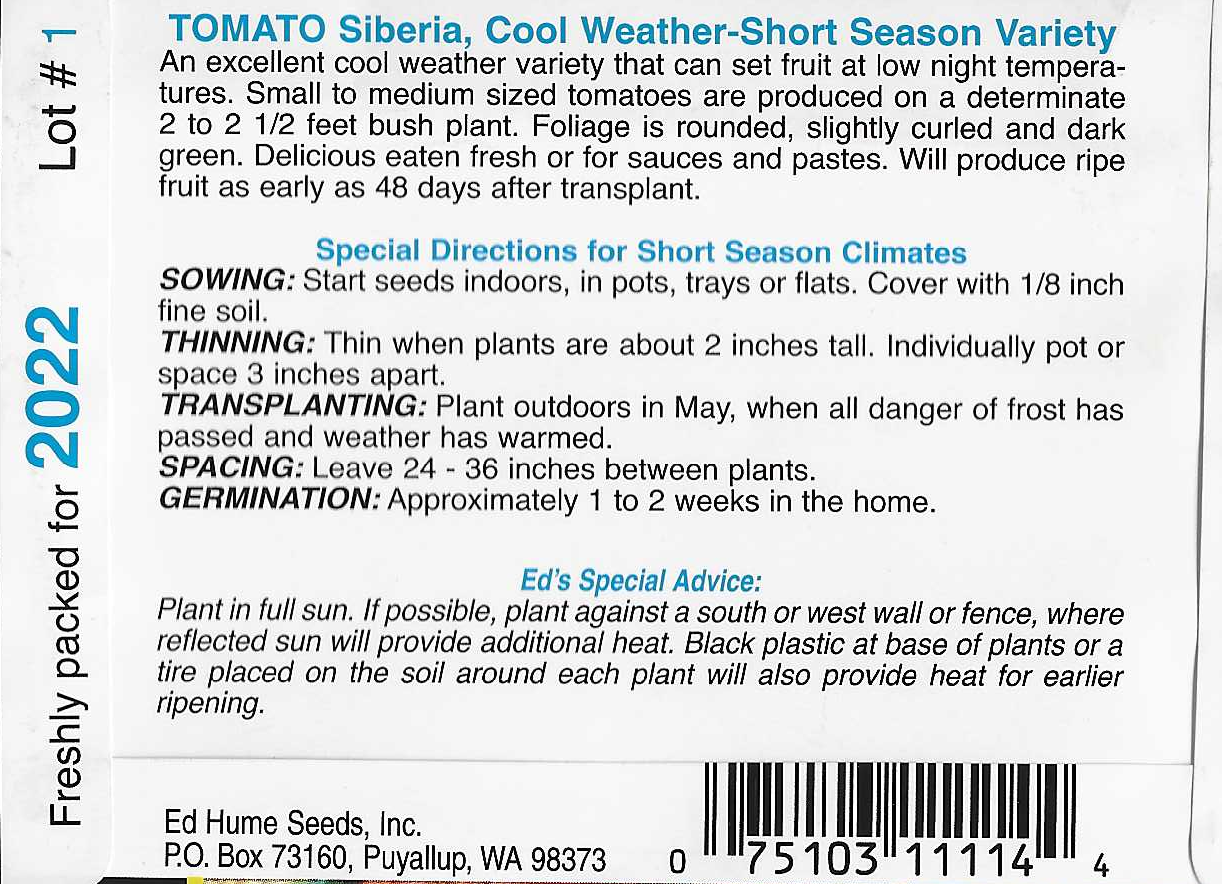Reading seed packets
Seed packets contain a lot of information that can be used for garden planning.
Time considerations…. Can I grow it?
- Days to germination - Time for seeds to sprout under ideal conditions.
- Days to harvest / maturity - Time from once planted/adjusted to first fruit / vegetable under ideal conditions.

Using a tomato as an example:
- 7 days to germination
- 14 days to transplant size
- 14 days for plant to adjust to soil
- 48 days to harvest
- Total: 83 days from seed to harvest
This can be helpful for determing when to start, succession planting, and if the growing season is long enough. As with most aspects of gardening, times are not exact but tend to be good enough for planning purposes. To calculate this for your area, look up the typical frost dates for where you live (example: First frost is October 1 and last frost is April 17th for my area).
What is the last day to germinate?
Count back 83 days from first frost date. Example: October 1 minus 83 days = July 10.
If you are using spreadsheet, formula for this is
=DATE(YEAR(TODAY()),10,1) -83
Earliest germination Having plants ready at the earliest time (ie start conditioning them for transplant after frost has cleared) is based on last frost date. Add germinate time (7 days) and seedling time (14 days) and subtracts from last frost date. Example: April 17 - 21 days = March 27.
If you are using spreadsheet, formula for this is
=DATE(YEAR(TODAY()),4,17) - 21
So you have from March 27 to July 10 to germinate this variety.
Other care instructions
- Sowing or planting tips (some seeds need to be soaked overnight)
- Thinning and transplanting
- Shade and sun tolerance.
Other extension resources for reading seed packets.
- https://extension.psu.edu/information-on-seed-packets
- https://s3.wp.wsu.edu/uploads/sites/2086/2014/05/howtoreadseedcatalog1.pdf
- https://pss.uvm.edu/ppp/articles/seedpkt.html
- https://wyoextension.org/laramiecounty/wp-content/uploads/How-to-Read-a-Seed-Packet.pdf